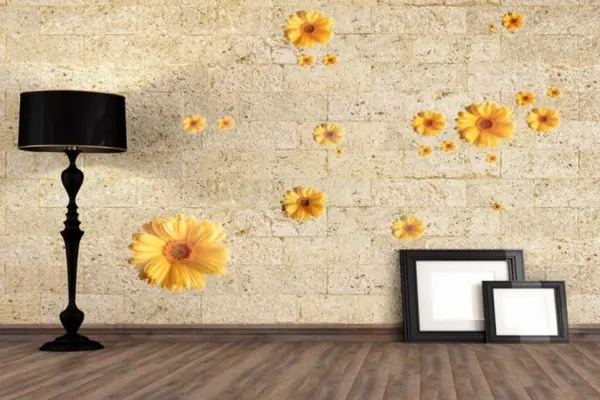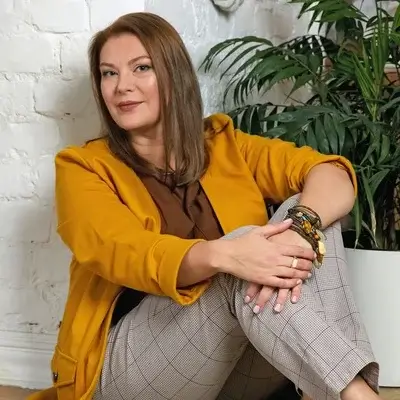Interior style is a reflection of your inner world. Creating a harmonious interior where different design trends are uniquely combined is a true art that requires understanding the basic principles of design and a sense of style. Mixing styles in design allows you to create a space that is not only functional and comfortable but also reflects the owner's individuality. In this article, we will look at how to achieve balance in interior design using elements of different stylistic directions, and create an eclectic interior that will please the eye and soul. Interior design styles are not just a set of rules, but an entire philosophy of space organization where the aesthetics of the interior combines with its practicality.
"Harmony in interior design is not uniformity, but a dynamic integration of different elements into a unified whole, balancing aesthetics, functionality, and comfort. It's like an orchestra where each instrument plays its part, but together they create a beautiful symphony." — Kelly Hoppen, renowned interior designer
Popular Interior Styles and Their Characteristics
Before talking about the harmonious combination of styles, it's important to understand the features of each. Modern interior style is characterized by clean lines and neutral colors, while classical interior style is distinguished by luxury and elegance. Let's look at the most popular stylistic directions in design.
Classical Interior Style
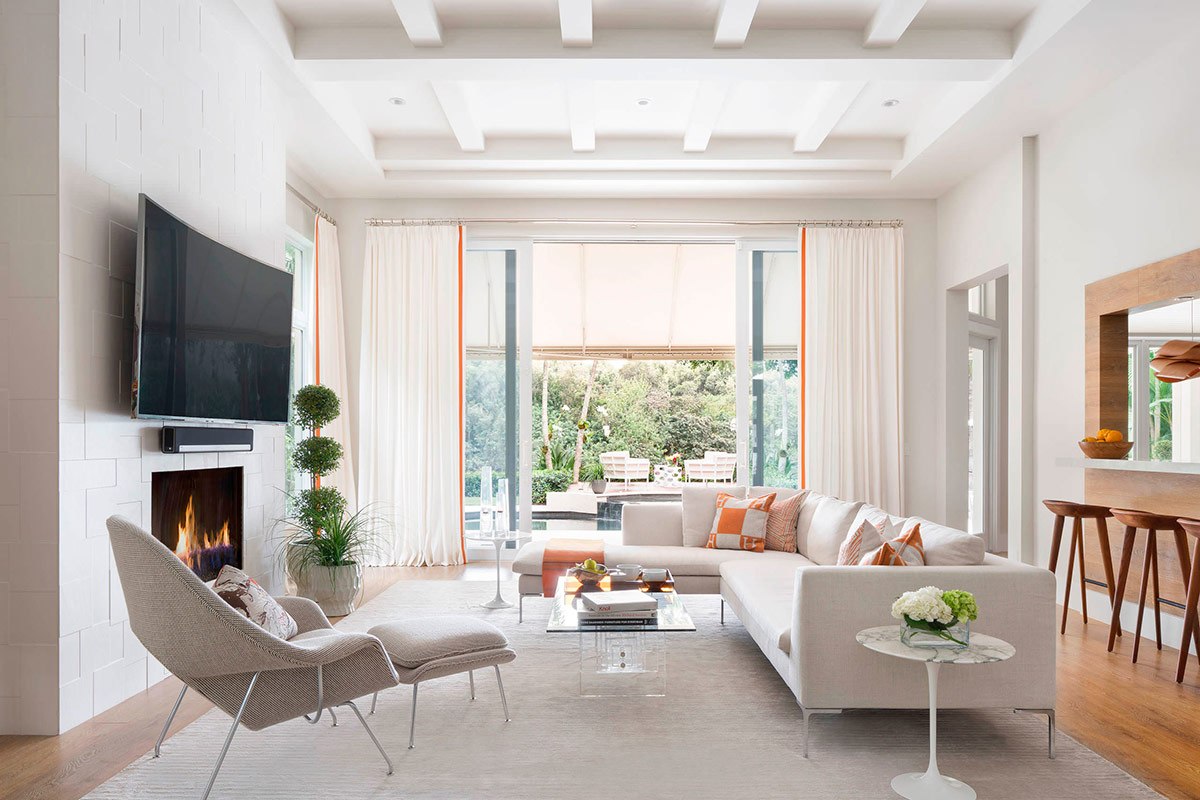
Classic design involves combining luxury, elegant lines, proper forms, and refined design solutions. It is characterized by comfort and nobility. The classical style is enriched with colors such as brown, beige, pearl, coffee, and cream. Classical interiors often use antique items, symmetry, and high-quality natural materials.
Minimalism in Interior Design
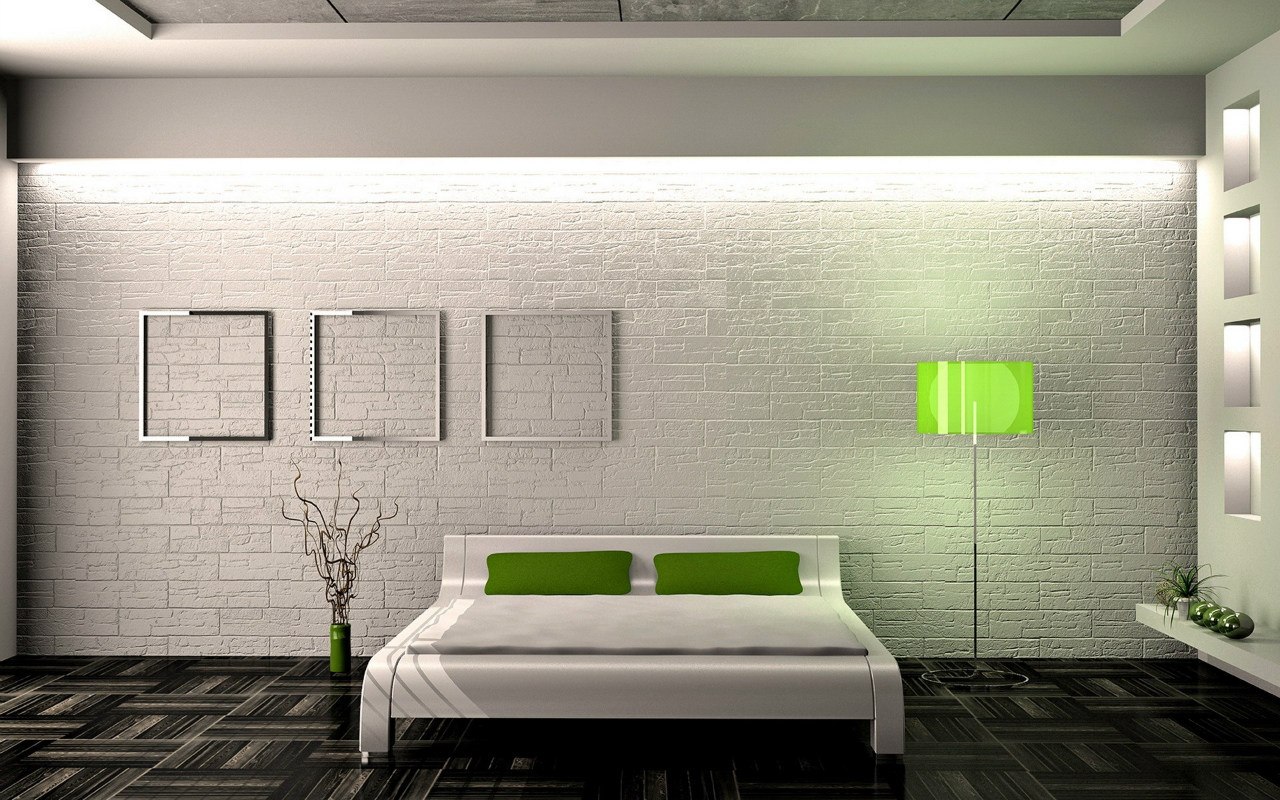
Minimalism is a synthesis of conciseness, simple lines, open space, and minimal decor. A feature of minimalism is the abundance of light thanks to spacious windows that make the outside world part of the interior. In minimalism, light, natural shades predominate. Furniture and accessories are chosen with an emphasis on functionality, for example, multifunctional furniture, movable shelving, and modern technology.
Scandinavian Interior Style
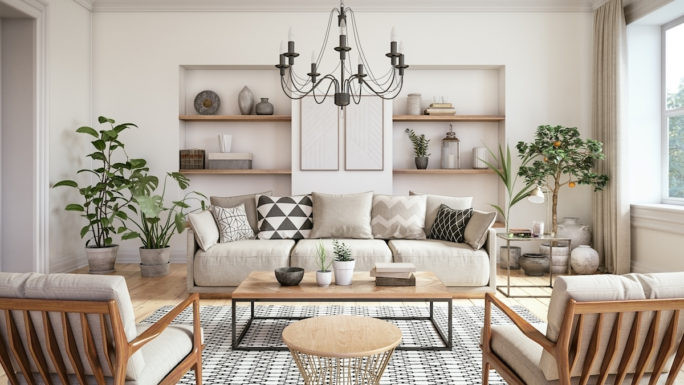 Scandinavian interior style is the embodiment of simplicity, functionality, and naturalness. It is characterized by light tones, an abundance of natural light, natural materials, and practical furniture. This style is ideal for small spaces, making them visually larger and brighter. Scandinavian design often combines with elements of other styles, creating a cozy and functional space.
Scandinavian interior style is the embodiment of simplicity, functionality, and naturalness. It is characterized by light tones, an abundance of natural light, natural materials, and practical furniture. This style is ideal for small spaces, making them visually larger and brighter. Scandinavian design often combines with elements of other styles, creating a cozy and functional space.
Industrial Interior Style (Loft)
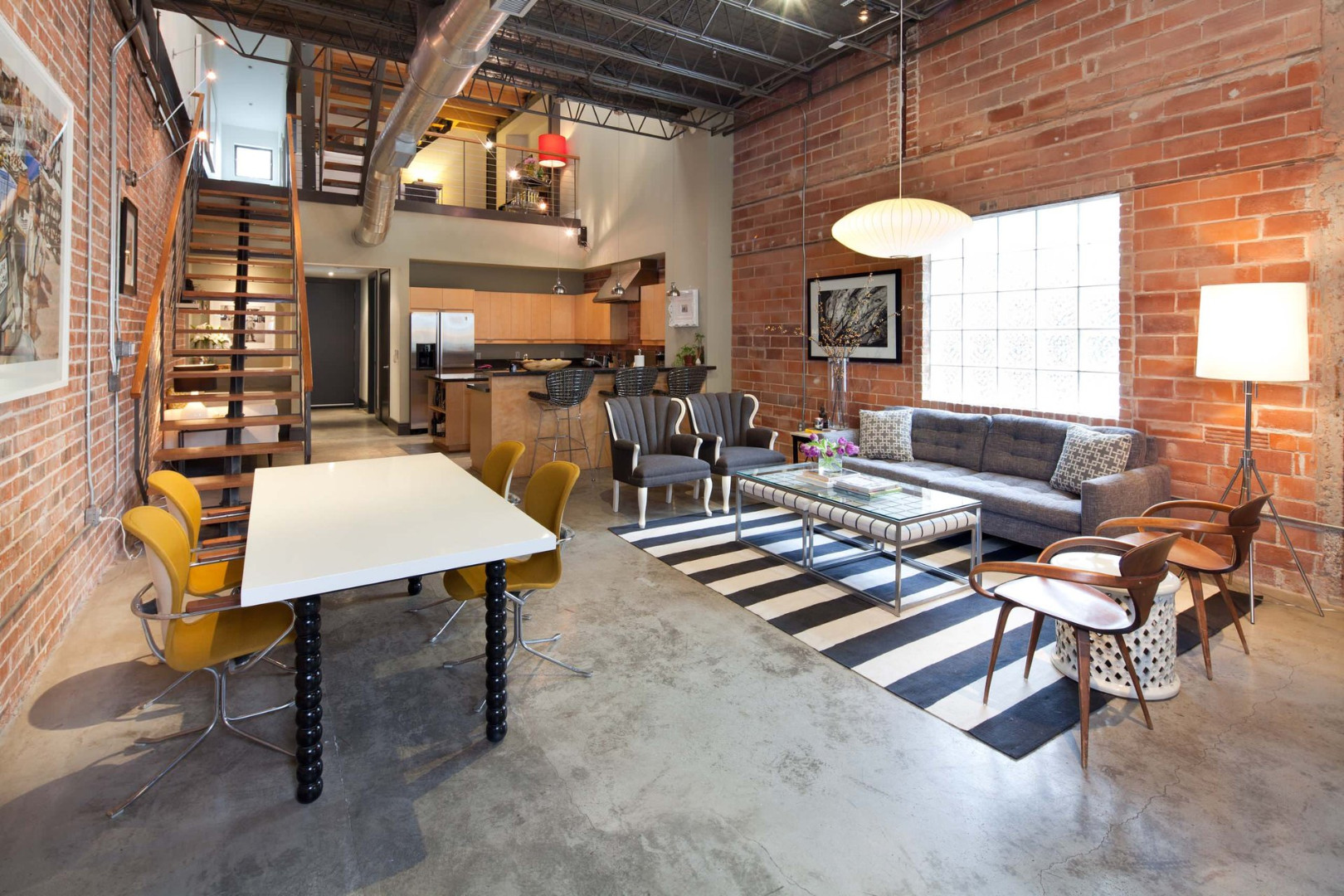 Industrial style, or loft, emerged as a result of transforming industrial premises into living spaces. It is characterized by open communications, untreated walls (brick, concrete), high ceilings, and large windows. The color scheme is dominated by neutral shades: gray, brown, black. Furniture is often massive, with elements of metal and rough wood. This style blends perfectly with vintage items and is becoming increasingly popular in modern urban apartments.
Industrial style, or loft, emerged as a result of transforming industrial premises into living spaces. It is characterized by open communications, untreated walls (brick, concrete), high ceilings, and large windows. The color scheme is dominated by neutral shades: gray, brown, black. Furniture is often massive, with elements of metal and rough wood. This style blends perfectly with vintage items and is becoming increasingly popular in modern urban apartments.
Art Deco
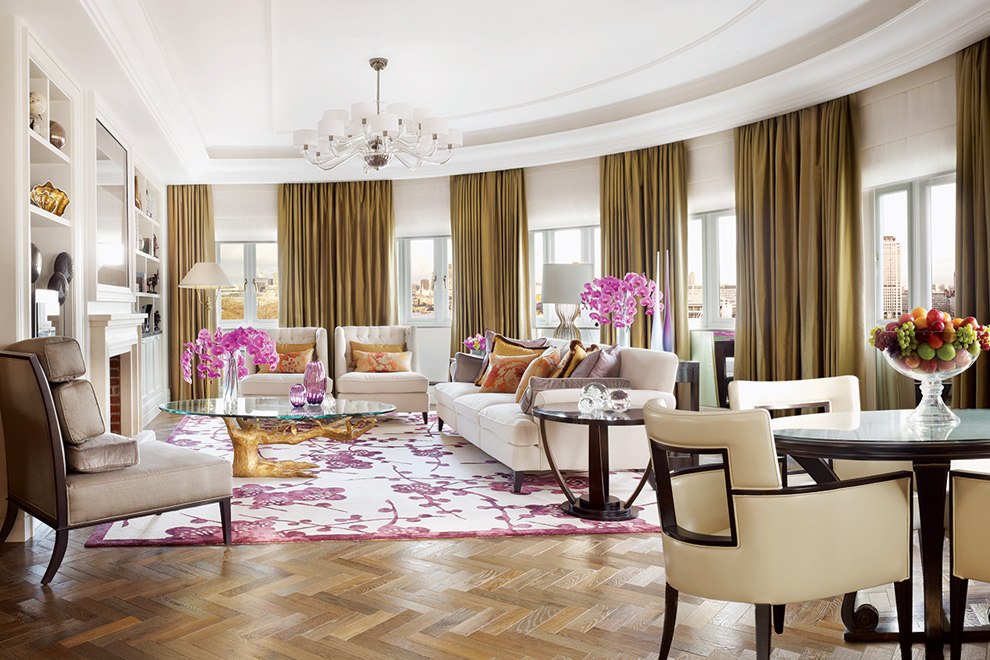
Art Deco is an aspiration for luxury and glamour. This style combines bold use of various materials, oriental motifs, and elements of antiquity. Distinctive features of Art Deco are precision of lines, graphic nature, broken and curved forms, as well as details in the form of zigzags, circles, and triangles. Art Deco utilizes materials such as ceramics, glass, bronze, as well as carpets with cubic patterns, fountains, and wrought iron grilles.
Boho-Chic in Interior Design
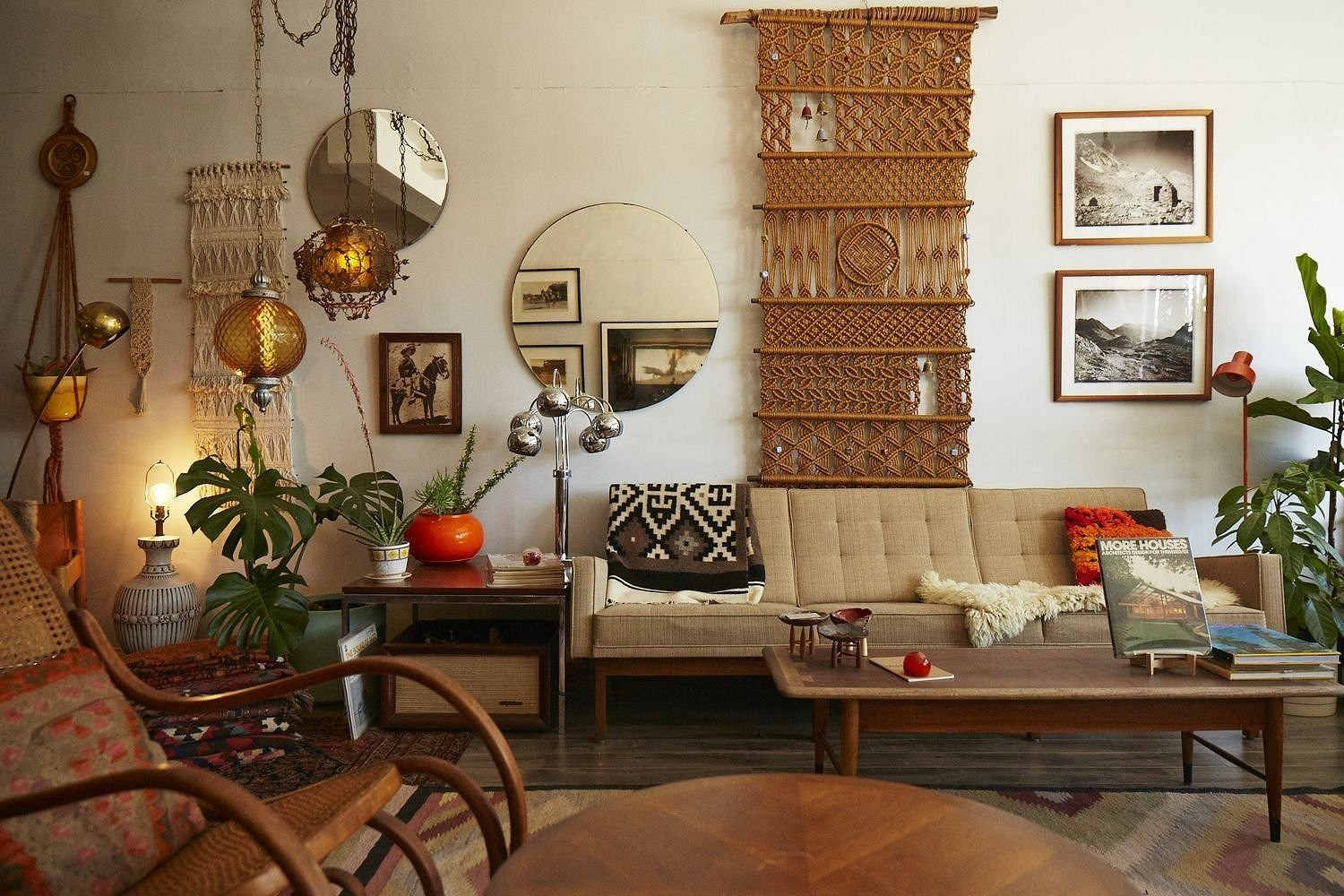 Boho-chic is a free, eclectic style inspired by bohemian aesthetics. It is characterized by bright colors, mixture of patterns, textures, and ethnic elements from around the world. In boho-chic interiors, you can often see vintage furniture, handmade decorations, multilayered textiles, and an abundance of plants. This style is perfect for creative personalities, allowing them to express individuality through unusual combinations of items and materials.
Boho-chic is a free, eclectic style inspired by bohemian aesthetics. It is characterized by bright colors, mixture of patterns, textures, and ethnic elements from around the world. In boho-chic interiors, you can often see vintage furniture, handmade decorations, multilayered textiles, and an abundance of plants. This style is perfect for creative personalities, allowing them to express individuality through unusual combinations of items and materials.
Mediterranean Interior Style
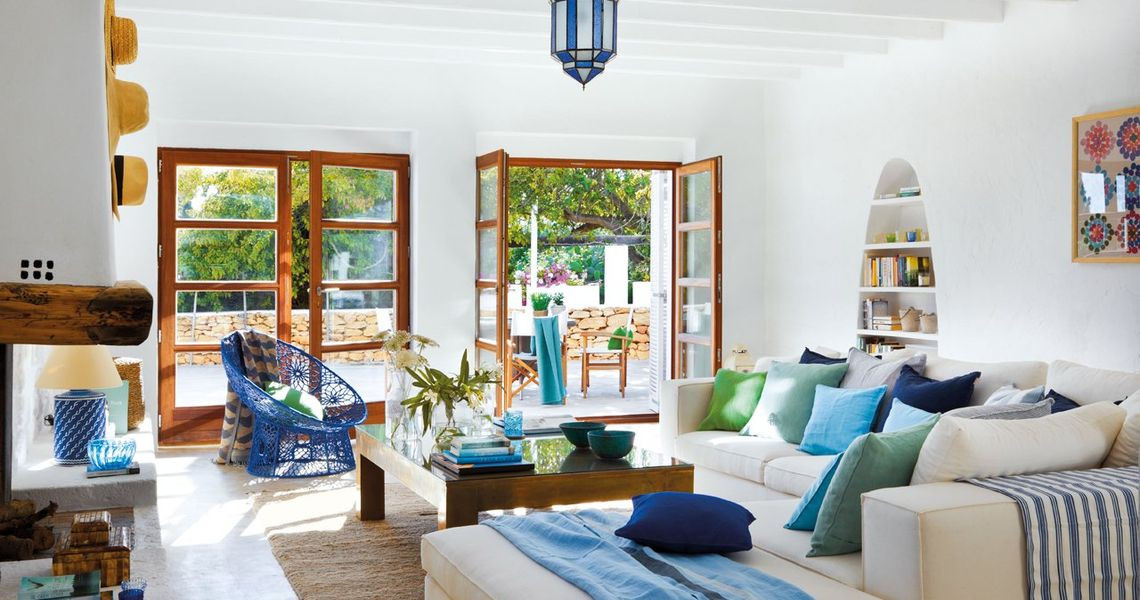 Mediterranean interior style is inspired by the coastal regions of Spain, Italy, France, and Greece. It is characterized by light walls (often white or pastel), bright accents (blue, terracotta, yellow), natural materials (wood, stone, ceramics), and an abundance of light. Furniture usually has simple, functional forms and is often made from untreated or bleached wood. This style creates an atmosphere of relaxed, resort lifestyle and combines well with other design directions.
Mediterranean interior style is inspired by the coastal regions of Spain, Italy, France, and Greece. It is characterized by light walls (often white or pastel), bright accents (blue, terracotta, yellow), natural materials (wood, stone, ceramics), and an abundance of light. Furniture usually has simple, functional forms and is often made from untreated or bleached wood. This style creates an atmosphere of relaxed, resort lifestyle and combines well with other design directions.
Contemporary Style
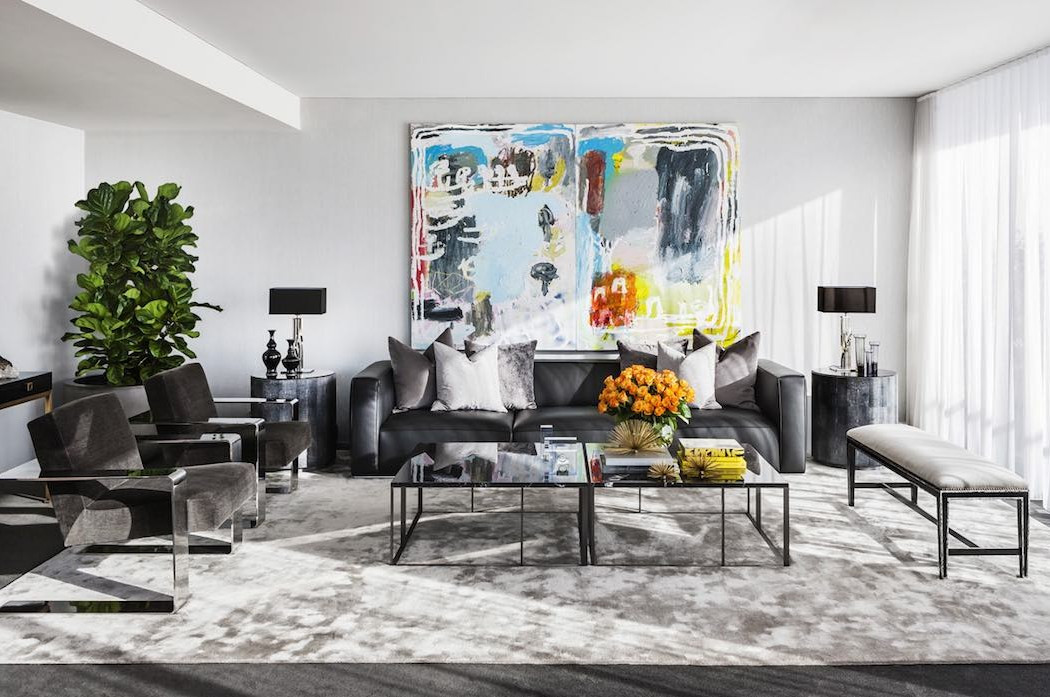 Contemporary interior style reflects current design trends and constantly evolves. It is characterized by clean lines, a neutral color palette with bright accents, minimal accessories, and functional furniture. Unlike minimalism, the contemporary style is warmer and cozier, allowing the use of various textures and materials. This style is ideal for those who follow trends and want to create a modern yet comfortable space.
Contemporary interior style reflects current design trends and constantly evolves. It is characterized by clean lines, a neutral color palette with bright accents, minimal accessories, and functional furniture. Unlike minimalism, the contemporary style is warmer and cozier, allowing the use of various textures and materials. This style is ideal for those who follow trends and want to create a modern yet comfortable space.
The Art of Style Integration in Design: Basic Principles
Creating a harmonious eclectic interior requires understanding the basic principles of design. Integration of styles in design is not just a random combination of elements, but a thoughtful process in which each detail plays its role. To achieve visual balance in the interior, it is necessary to consider the color palette, textures in interior design, and proportions in interior design. Ergonomics in design also plays an important role, as even the most beautiful interior will not be comfortable if it does not take into account the characteristics of the human body and everyday habits.
"The best interior is one that reflects your personality through a combination of different styles. Don't be afraid to experiment, but remember the golden rule of design: composition in the interior should create a sense of harmony and balance." — Nate Berkus, American interior designer
Rules for Combining Styles in Interior Design
 There are several basic rules that will help create a harmonious style mix in the interior:
There are several basic rules that will help create a harmonious style mix in the interior:
- Color Harmony: Choose a main color palette that will connect different elements of the interior. These can be neutral tones with bright accents.
- Balance and Proportions: Maintain balance in interior design between different elements so that none of them dominates too strongly.
- Unifying Elements: Use repeating elements such as textures, shapes, or materials to create a connection between different styles.
- Functionality: Remember that the interior should be not only beautiful but also functional.
- Dominance in Design: Determine the dominant style that will form the basis of the interior, and use other styles as complements.
- Unity of Styles in Interior: Despite the diversity, all elements should create a cohesive picture.
Fusion in Interior Design: Creativity and Practicality
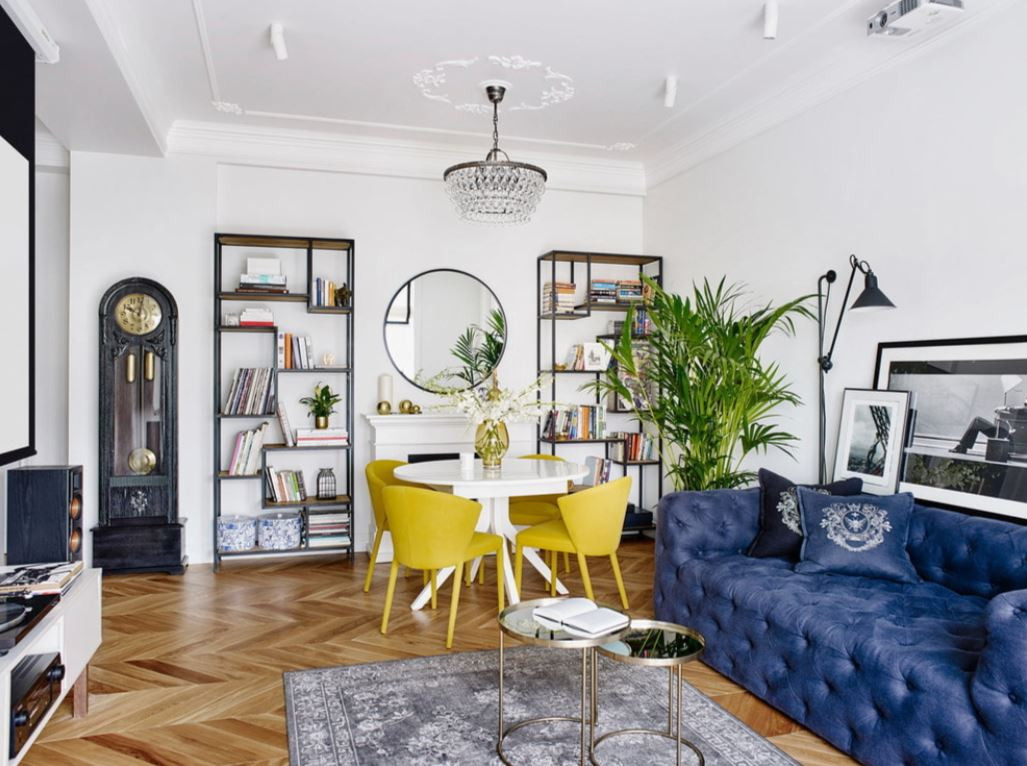 Fusion in interior design is a style that combines elements of different cultures and epochs. It allows you to create a unique space that reflects the owner's individuality. The key principle of fusion is creative freedom, but with maintaining overall harmony. In such an interior, vintage items can be combined with modern furniture, ethnic elements with minimalist design.
Fusion in interior design is a style that combines elements of different cultures and epochs. It allows you to create a unique space that reflects the owner's individuality. The key principle of fusion is creative freedom, but with maintaining overall harmony. In such an interior, vintage items can be combined with modern furniture, ethnic elements with minimalist design.
According to research by Better Homes & Gardens, when creating an interior in a mixed style, it is particularly important to consider the individual preferences of all family members. Experts recommend starting the style integration process by choosing common values and determining functional needs, and then finding compromises on aesthetic issues.
| Style Combination | Main Characteristics | Suitable Colors | Key Elements |
|---|---|---|---|
| Modern Classic in Interior Design | Elegance of classics with functionality of modern design | Neutral tones with accents | Classical architecture, modern furniture |
| Scandinavian Minimalism with Ethnic Elements | Light base with bright ethnic accents | White, beige with bright accents | Functional furniture, ethnic accessories |
| Loft with Classical Elements | Industrial base with exquisite classical details | Gray, brown, black | Open communications, classical furniture |
| Industrial Style with Vintage | Rough industrial elements with vintage items | Gray, black, rust, patina | Metal structures, vintage finds |
| Provence and Modernity in Interior Design | French countryside charm with modern lines | Lavender, olive, cream | Patinated furniture, modern technology |
| Japanese Minimalism with Eco-Style | Japanese simplicity with natural elements | Beige, green, brown | Low furniture, live plants, natural materials |
| Art Deco and Modern in Design | Luxury of Art Deco with flowing lines of modern style | Gold, black, emerald | Geometric patterns, natural materials |
| Neoclassicism with High-Tech | Classical elegance with high-tech solutions | White, gray, silver | Classical architecture, modern technology |
This table presents the most harmonious combinations of styles in interior design that will help you create a unique and functional space. Remember that the key to successfully mixing styles is balance and attention to detail.
Textures in Mixed Style: Playing with Contrasts
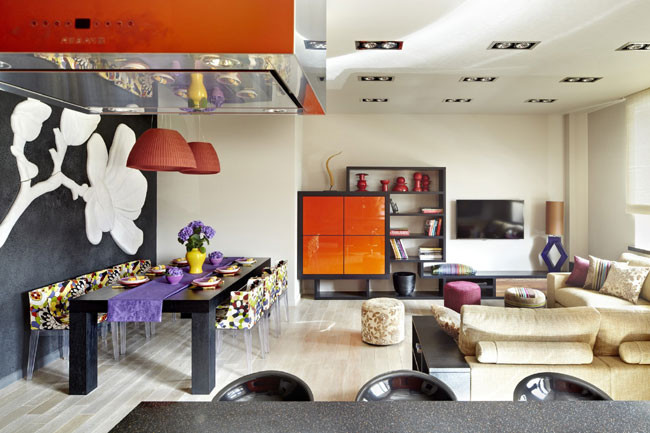 Using different textures is an effective way to add depth and interest to a mixed-style interior. Contrast in the interior can be created by combining smooth and rough surfaces, matte and glossy elements, soft and hard materials. For example, a soft velvet sofa will look great against a rough brick wall, and a smooth glass table will complement a wooden floor with pronounced texture.
Using different textures is an effective way to add depth and interest to a mixed-style interior. Contrast in the interior can be created by combining smooth and rough surfaces, matte and glossy elements, soft and hard materials. For example, a soft velvet sofa will look great against a rough brick wall, and a smooth glass table will complement a wooden floor with pronounced texture.
When choosing textures, it's important to maintain balance and not overload the space. Usually, 3-4 different textures in one room are sufficient. Harmony of textures in the interior is achieved when they complement each other and create visual interest without conflicting with each other. Proportions in eclectic design play a crucial role – the right ratio of different textures helps create a holistic space where each element is in harmony with others.
Asymmetrical balance in design is especially characteristic of eclectic interiors. Unlike symmetrical arrangement, where elements mirror each other, asymmetrical balance creates a more dynamic and interesting composition. For example, a heavy piece of furniture in one part of the room can be balanced by a group of lighter items in another part. This approach requires a fine sense of proportions, but the result is worth the effort – the interior looks more lively and natural.
Success Story: Transforming an Apartment in Eclectic Style
Mark and Emily, a young couple from San Francisco, faced a dilemma when decorating their new apartment. He preferred modern minimalism, she – cozy Scandinavian style with vintage elements. The solution came when they turned to a designer specializing in eclectic interiors.
The designer proposed a bold solution: create a style mix in the interior, preserving the clean lines and functionality of minimalism, but adding the warmth and coziness of Scandinavian style. The project began with choosing a neutral base – light walls and wooden floors. Then minimalist furniture in light tones, vintage accessories, and textiles with ethnic motifs were added.
The key moment was the use of accent elements in the interior – a vintage dresser that Emily inherited from her grandmother, and a contemporary abstract painting chosen by Mark. These items became the connecting links between different styles, creating a unified composition.
Accent walls played an important role in the eclectic interior – one of the walls was painted in a deep blue color, which created a focal point and helped unite diverse decorative elements. Functional decor – multipurpose items combining aesthetics and practicality – also helped create a harmonious space not overloaded with details.
The result exceeded all expectations – the apartment became not only a harmonious combination of their preferences but also a reflection of their personality. "Now our home really feels like ours," says Emily. "Every corner tells a part of our story."
Modern Trends in Interior Design: Mixing and Eclecticism
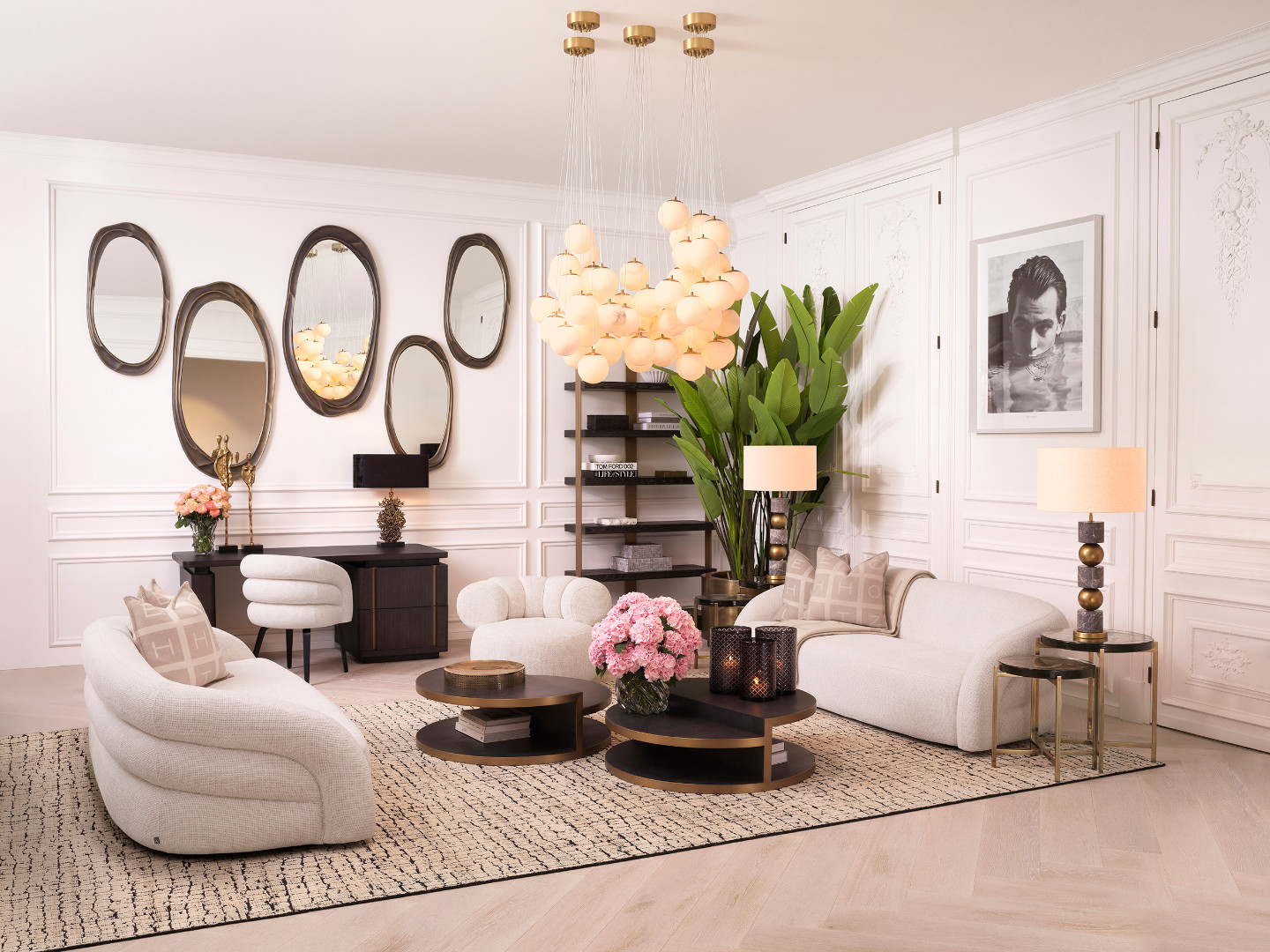 In recent years, eclecticism in interior design has become increasingly popular among designers and homeowners. This is due to the desire to create a unique space that reflects individuality and does not adhere to the strict canons of a single style. Modern trends in design demonstrate bold experiments with combining different epochs and cultures.
In recent years, eclecticism in interior design has become increasingly popular among designers and homeowners. This is due to the desire to create a unique space that reflects individuality and does not adhere to the strict canons of a single style. Modern trends in design demonstrate bold experiments with combining different epochs and cultures.
A design project in mixed style requires a special approach. Before starting the decoration, it is useful to study the main characteristics of the styles you plan to combine and determine which elements of each are most attractive to you. The functionality of the interior remains a priority – a beautiful space should be convenient for everyday life.
Decorating an interior in an eclectic style involves using bright accents and unusual combinations. You can experiment with decor for mixed styles, combining, for example, ethnic accessories with modern forms or vintage items with minimalist elements. The main rule is to maintain moderation and create a harmonious composition.
Furniture for an eclectic interior can be diverse, but it's important that it unites through common features – color, material, or form. For example, a sofa in a modern style can be complemented by a vintage coffee table if they harmonize in color scheme or proportions. Accessories for style mix help create a connection between different elements of the interior and complete the overall composition.
"Eclecticism in interior design is not chaos, but a conscious mixing of styles, where each element has its place and meaning. It's like creating a collage of memories, impressions, and dreams, which ultimately becomes a reflection of your unique personality." — Emily Henderson, designer and TV host
Color Palette in Eclectic Design
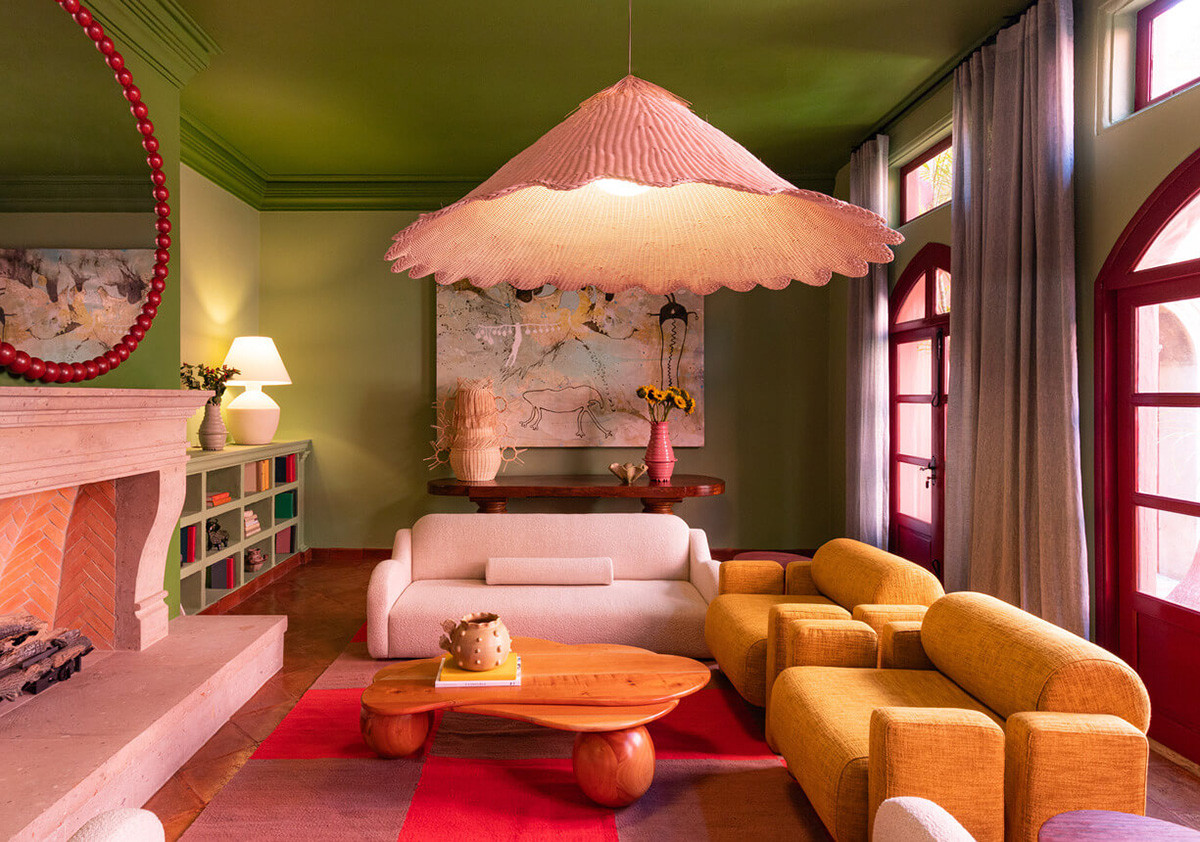 Color harmony in design plays a key role in creating a successful eclectic interior. Color can be a unifying element that connects different styles into a cohesive whole. When creating an eclectic interior, it is recommended to choose a basic color scheme of 2-3 neutral colors and complement it with accent colors.
Color harmony in design plays a key role in creating a successful eclectic interior. Color can be a unifying element that connects different styles into a cohesive whole. When creating an eclectic interior, it is recommended to choose a basic color scheme of 2-3 neutral colors and complement it with accent colors.
Asymmetrical balance in design can be created using color accents of different intensities. For example, a bright chair in one corner of the room can be balanced by a group of small accessories of the same color in another corner. It's important to remember that in an eclectic interior, colors should interact with each other, creating a harmonious composition.
Eco-Style and Natural Shades: New Trends in Mixed Interiors
.jpg) According to recent studies, more than 60% of interior designers today prefer eco-friendly materials in their projects. Eco-style is becoming increasingly popular in modern design, and its elements are often included in mixed interiors. Natural shades in the interior create a sense of calm and harmony, making them an ideal choice for creating a cozy space.
According to recent studies, more than 60% of interior designers today prefer eco-friendly materials in their projects. Eco-style is becoming increasingly popular in modern design, and its elements are often included in mixed interiors. Natural shades in the interior create a sense of calm and harmony, making them an ideal choice for creating a cozy space.
Japanese minimalism with eco-style is one of the most harmonious combinations that unites the simplicity and functionality of Japanese design with eco-friendliness and closeness to nature. Such interiors use natural materials such as wood, bamboo, stone, as well as an abundance of plants.
According to research Sustainable Interior Design: Strategies for Creating Eco-Friendly Spaces, when choosing materials for eco-friendly interior design, it's important to consider several key factors: low ecological footprint, ease of maintenance, durability, budget compliance, comfort, safety, and flexibility. Integrating sustainable design into interior architecture is a significant step towards reducing negative environmental impact.
Interiors that incorporate elements of eco-style are not only aesthetically appealing but also contribute to improving quality of life by creating a healthy and harmonious living environment. Isn't it wonderful when your home not only reflects your individuality but also cares for your well-being?
Professional Interior Design: When to Consult a Specialist
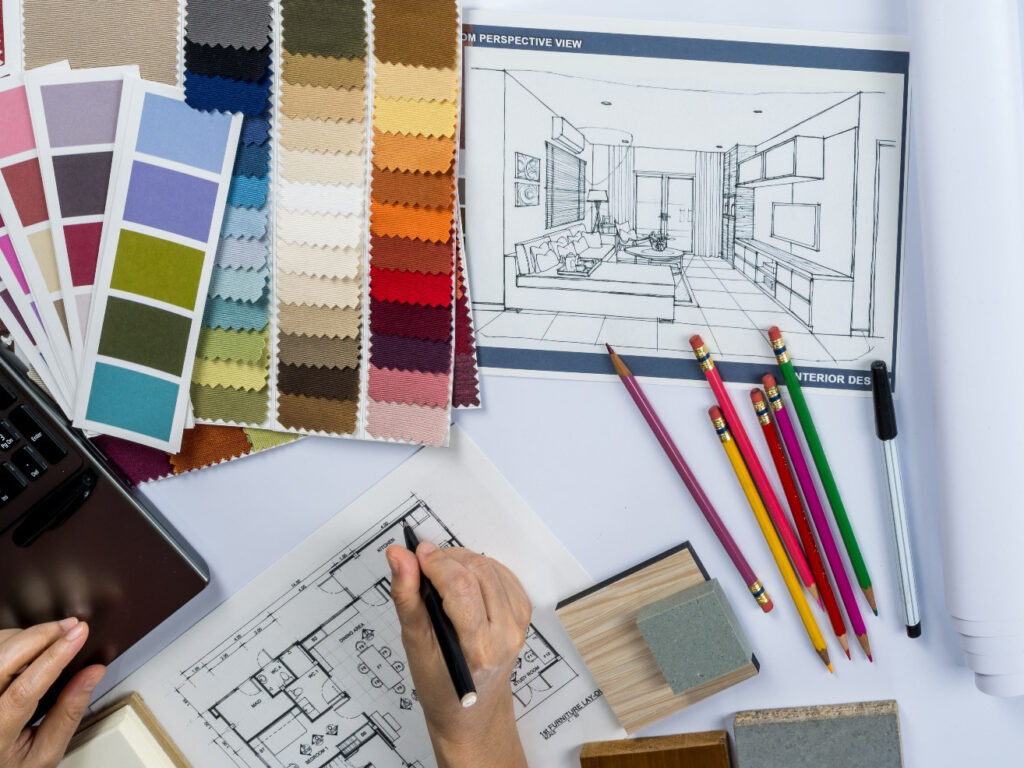 Creating a harmonious mix of styles can be a challenging task, especially if you have no experience in interior design. In such cases, it's worth considering hiring a professional. Interior designer services may seem expensive, but they often pay off through savings on fixing mistakes and more efficient use of the budget.
Creating a harmonious mix of styles can be a challenging task, especially if you have no experience in interior design. In such cases, it's worth considering hiring a professional. Interior designer services may seem expensive, but they often pay off through savings on fixing mistakes and more efficient use of the budget.
A designer will not only help you create a harmonious interior but also save your time and nerves. A professional knows all the nuances of combining various styles and will help bring your ideas to life while avoiding common mistakes. Interior designer consultation can be especially useful at the initial stage of the project when the overall concept of the space is being determined.
Conclusion
Harmony of styles in interior design is an art that requires knowledge, taste, and a sense of measure. Creating an eclectic interior allows you to express your individuality and create a space that will be not only beautiful but also comfortable for living. Combining various design styles, from classics to minimalism, from Scandinavian design to Art Deco, provides limitless possibilities for creativity and self-expression.
Remember that the main elements in interior design are balance, proportions, and harmony. Don't be afraid to experiment, but remember the sense of measure. Integration of styles in design should be a conscious process in which each element has its place and meaning. The aesthetics of the interior and its functionality should complement each other, creating a space that is not only beautiful but also convenient for living.
And most importantly – your interior should reflect your personality and match your lifestyle. Only then will it become truly harmonious and cozy, a place where you will be happy to return every day. After all, interior design is not just a set of rules and techniques, but an expression of your inner world and lifestyle.
